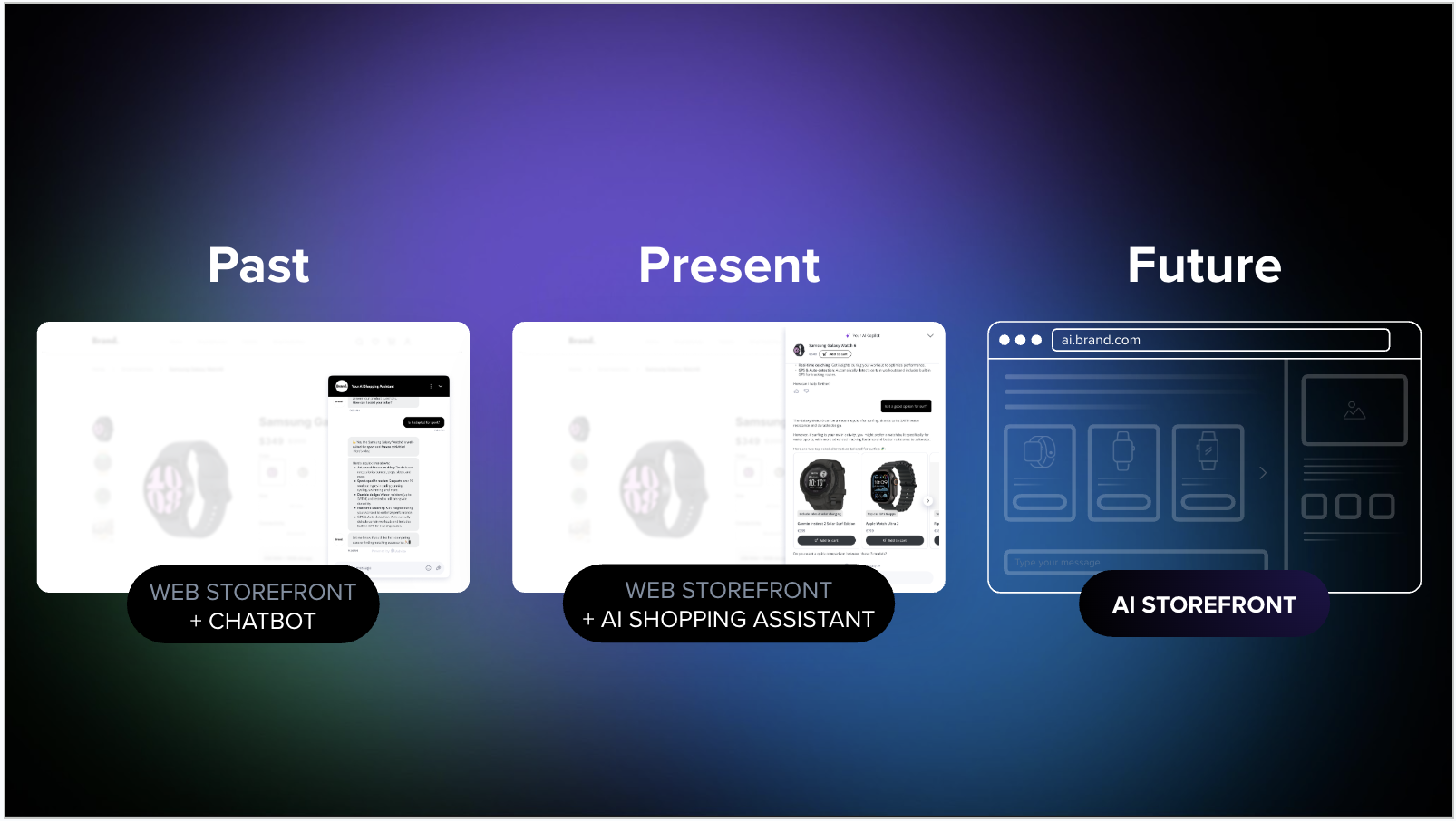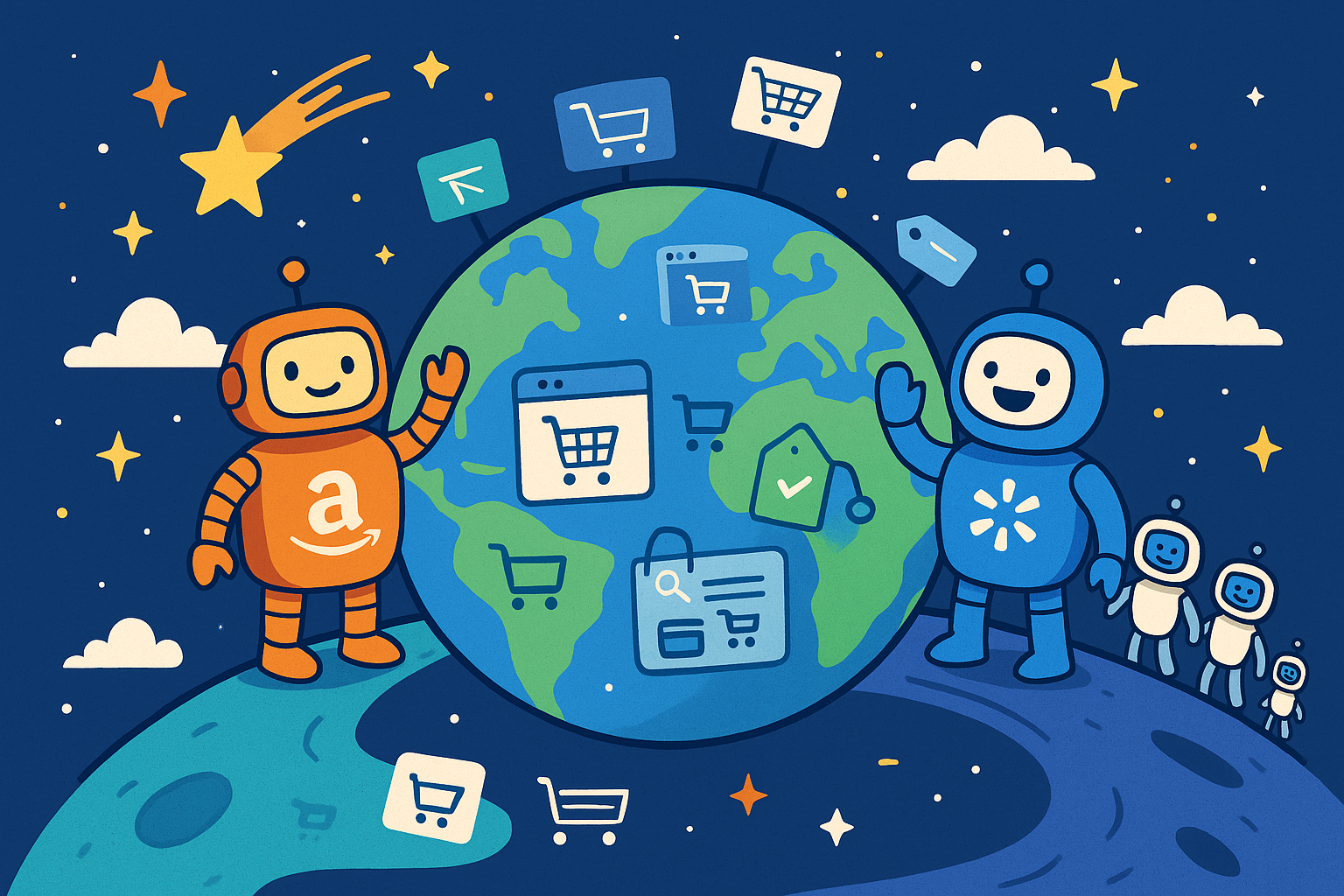5 Blunt Truths About the Limitations of AI and Chatbots
iAdvize
As a retailer, you undoubtedly feel immense pressure to keep up with ever-changing customer expectations. Your online customers can shop 24/7–and they want instant information or else they may click away to a competitor’s site. Are chatbots the answer? Before you invest too heavily in a bot-centric solution, you should know the limitations of AI and chatbots in retail.
Let’s start with some revealing data. The Global Consumer Customer Service Report found that only about half of consumers would turn to a chatbot at all. And even then, they would likely only use a bot for a simple need. For more complicated issues, most shoppers prefer talking to a human. Some customers will always choose to self-serve first, but they always want to have a path to connect to a human if they can’t solve problems on their own.
The report also found that consumers feel concerned that companies are moving too quickly to adopt bots and making it more difficult to reach a human. A third of shoppers aged 18 to 24 agreed that bots make it harder to connect with human support when needed.
Chatbots have a clear and valuable place in customer service. They’re great for routine or simple tasks, like paying a bill or finding the nearest store location. But the human-to-human connection is always going to be important–especially during the pre-sales journey.
In this post, we’ll outline five limitations of AI and chatbot technology that every retailer should know. Use these insights to help prioritize when and how to deploy chatbots in a smart, cost-effective way.
But remember: Bots should be just one component of a customer-focused service approach. Customers will always want a way to connect with authentic, human support when they can’t get the answers they need from bots. Delivering human-to-human support at scale is possible with a conversational experience platform.
1. Chatbots Aren't Human
Here’s the blunt truth: chatbots are robots, not people. Although you can attempt to equip them with a casual tone and voice, they will never truly pass as human, and that shouldn't be the goal when dealing with them in an business setting.
When designing artificial intelligence-powered tools, developers need to make important choices about their voice and tone early on. They need to decide whether their bot will be straightforward and factual, or convey a certain type of personality.
Some companies have tried to make bots seem more human by having them go beyond informational and transactional dialogues, but this often leads to ethical concerns and a lack of trust in your brand. If your customers discover that they've been misled, they're likely to get frustrated and take their business elsewhere.
What's the right thing to do in these types of situations? Is it better to address the issue head on? Consider the two examples below:
- In this first example, the website suggests that the user has engaged with someone named 'Katelyn' to get a personalized legal referral. However, Katelyn’s repetitive responses to user questions reveal to the visitor that they're speaking with a bot, not a person.
- The second example below reveals a different, more customer-friendly approach. Instead of implying that the chat respondent is a human, the site uses the name 'Gary Grasshopper' for its bot. Since customers know they couldn’t possibly be talking to a grasshopper, they can assume they're talking to a bot, meaning that users know upfront they may not be able to get all of their questions answered.
As these examples show, companies should make it clear when a visitor is talking to a bot, even if they create a human-like persona. People will grow frustrated if they feel they’ve been conversing with a human and discover they’ve been interacting with a chatbot. And the truth is no bot–no matter how sophisticated–can ever equal our human ability to handle complex questions.
What happens when a shopper does have complex questions? First, bots need a range of error messages–scripted to align with their personas–to ensure they don’t seem repetitive. And people always need a way to connect with a human when they’ve reached the limits of what they can do through a bot.
Bots need to know their own limitations too. Instead of continuing with chat where they can’t provide solutions, bots should know when to transition the conversation to a human. The Grasshopper above shows a simple step in the right direction. Why is transitioning the conversation so important? As IBM explains:
Perhaps the most human thing we can ingrain into our chatbots is the knowledge of their own limitations. In other words, bots should know when to ask for help from a human agent.IBM
The best-practice approach is to empower bots and humans to work together–and to give customers a choice in how to engage. In retail, contemporary conversational solutions use behavioral analysis to identify shoppers who are considering a purchase and offer an option to connect. That way, shoppers can decide whether or not to engage at all. And if they do, they can choose between a bot, a customer service agent, or a human brand ambassador based on their needs.
2. Chatbots Lack Human Emotions
Chatbots are great at providing facts and data. But they can never truly create an emotional bond with customers. And building an emotional bond can be a make-or-break factor in today’s competitive environment.
Why? Research published in the Harvard Business Review has proven that consumers who have an emotional connection with a brand are 25% to 100% more valuable than those who are satisfied.
As artificial intelligence (AI) technology has advanced, developers have become more able to program chatbot responses that seem to express sympathy or empathy. But should they? One Penn State study found that many people do appreciate these sentiments from chatbots, but regard them as courtesies instead of genuine expressions of emotion. Still, some people had very negative reactions to machines trying to portray empathy or sympathy.
Other research from Gartner found that over half of the respondents felt uncomfortable when bots express emotions. A human-like appearance or a face with moving lips or expressions also created discomfort. Far more respondents preferred bots that look non-human and provide typed responses.
3. AI-Powered Bots Are Often Repetitive
One of the challenges with chatbots is that they can only deliver a set number of responses. It would be impossible to program with all of the infinite variations of human language so that they can fully engage in authentic conversation.
For users, this can lead to an uncomfortable scenario where a bot repeatedly sends error messages or input requests instead of listening to the users’ queries. In fact, some unsophisticated approaches may use the exact same language repeatedly. When this happens, people will feel that their questions or perspectives truly aren’t being heard. They may begin to associate those negative perceptions with the brand. And this will diminish trust and harm the relationship.
Unless there’s a built-in set of closed-ended questions, customers can enter anything into a chat dialog box. They can submit valid inquiries, strings of nonsense characters, or human pleasantries. Some users may deliberately test the limits of a bot’s interaction capabilities and form an opinion on the brand based on the responses.
Take a look at these two examples that were highlighted in Chatbots Magazine. In the first one, the user is entering a simple conversational phrase and encountering a repeated error message. Plus, the bot asks the user to “try again,” which isn’t helpful. Users have no way of knowing the bot’s range of capabilities, so have no way to know what they may have done wrong.
While researching this article, we encountered the same situation. On one site visited, the bot first asked us which product interested us. We entered “other” since we wanted to chat with the bot to help clarify our options. Next, the bot asked when we wanted the “other” product that we said interested us. The options were “Next Month,” “Next Week,” and “This Week.” We clicked “This Week” since we wanted to get our questions answered by the bot right away.
After this input, we got stuck in a loop of repeated responses. Instead of even attempting a conversation, the bot repeatedly asked for an email address. There was no path to engage with the bot further to determine if giving out an email was a good choice. Instead, the bot replied: “Please enter a valid Email Address.”
It’s likely that phrase was the only possible response after being forced down a path of selecting a product option. In this scenario, the bot provided no support in assessing alternatives or helping guide decisions. The bot’s only function was to collect an email for marketing or sales follow-up. This approach can feel alienating to prospective customers instead of building a sense of trust with and connection to the brand.
4. Human Oversight is Still Important for Helping People Make Purchasing Decisions
When shopping online, especially when making an expensive purchase, people must weigh multiple factors before making a decision. This also happens when shopping in a physical store. However, the online shopping experience feels very different from the in-store experience.
Customers shopping in brick-and-mortar stores can see and touch products before buying them. They can get the true colors, fit, and size of the products they're interested in. Plus, they can talk with knowledgeable customer service representatives to determine if the product is truly what they're looking for.
The online experience is often much more anonymous and self-serviced. Even with detailed specifications, 360 degree product views, and reviews from past customers, shoppers will still face a bit more uncertainty about the products they're looking at. It's been found that this lack of confidence is a major barrier to following through on an online purchase.
What does this mean for brands and retailers? Don’t entirely entrust bots to do the complex work of helping consumers make decisions. Instead, embrace all the advancements in conversational commerce and generative AI technology to better fill the gaps in the e-commerce user experience by connecting your website visitors with instant, tailored help and efficiency.
This way, you’re giving your visitors access to the right human connects and streamlined product search help that makes them confident in their buying decisions. Doing this will result in drops in your cart abandonment rate, fewer order returns, and improved customer satisfaction.
5. Chatbots Alone Won't Help Your Customer Retention Rate
Today’s customers have access to a world of digital information at their fingertips, 24/7. This means that they're much more likely now to explore their options with different brands before making a purchase decision.
Two-thirds of people say the number of brands they consider when purchasing has increased significantly compared to a decade ago. And 70% of consumers say technology makes it easier for them to take their business elsewhere.
As the e-commerce market gets more competitive, you need to do all you can to keep customers satisfied. Delivering personalized customer experiences at scale is the way to make this happen. Nearly 3 out of 4 Americans shop online several times a month, yet only 55% say they're very satisfied with their experience afterwards.
An over-reliance on bots and live chat can stir up the feelings that drive customers away. Instead of responding with sincere empathy, these tools can get formulaic and redundant in their answers. Sure, they help speed up simple tasks, but interacting with one can make your customers feel like you think of them as numbers, not people.
Contrast this feeling with the experiences customers have when they can connect to an on-demand brand advocate or customer service agent whose passionate about and understands their unique needs.
Even if they don’t buy on-the-spot, customers will know that your brand sees them as individuals. You’ll build a bond of trust that will endure and help those shoppers see you as a helpful, supportive resource for future purchases. And you’ll stand out as a brand worthy of loyalty in an era when choices are abundant.
A New Era for the E-commerce Shopping Journey
There's no doubt about it that generative AI-powered systems have fundamentally changed the way consumers live and shop. For businesses, these programs offer unprecedented automation applications and conversion potential. However, even as artificial intelligence becomes more commonplace, it’s easy to fall prey to the mindset that each new innovation is the answer to every problem.
Forrester Research warns that businesses should look beyond the contemporary 'tech hype'. Instead of becoming over-reliant on bots and AI, the conclusion is that companies should move from a one-way brand monologue to a two-way, authentic dialogue with consumers across all digital touchpoints.
It's true that AI-generated content and bots have a role in serving customers. But these tools and algorithms can never completely replace humans. Instead, the key to e-commerce success is using the right mix of both. Your customers want the immediacy and around-the-clock availability that bots can give them, and the personalization and empathy that humans can provide.
Even the best AI bots will never be able to respond to the entirety of human interactions and expressions with output that's on par with actual humans. So, it's important to know the limits of artificial intelligence and deploy it on your website in a way that's right for the context of your business goals.
Design an e-commerce strategy that relies on bots and humans working together by giving shoppers access to personalized advice and information when they need it. When deploying AI, it’s better be transparent with your consumers and let them know upfront that they're interacting with robots.
When you do need a human touch at scale, the advantages of a conversational commerce approach far outweigh the disadvantages. It involves using generative AI-powered tools for answering more common and recurring requests and customer service agents for more complex issues.

.png)
.png)





